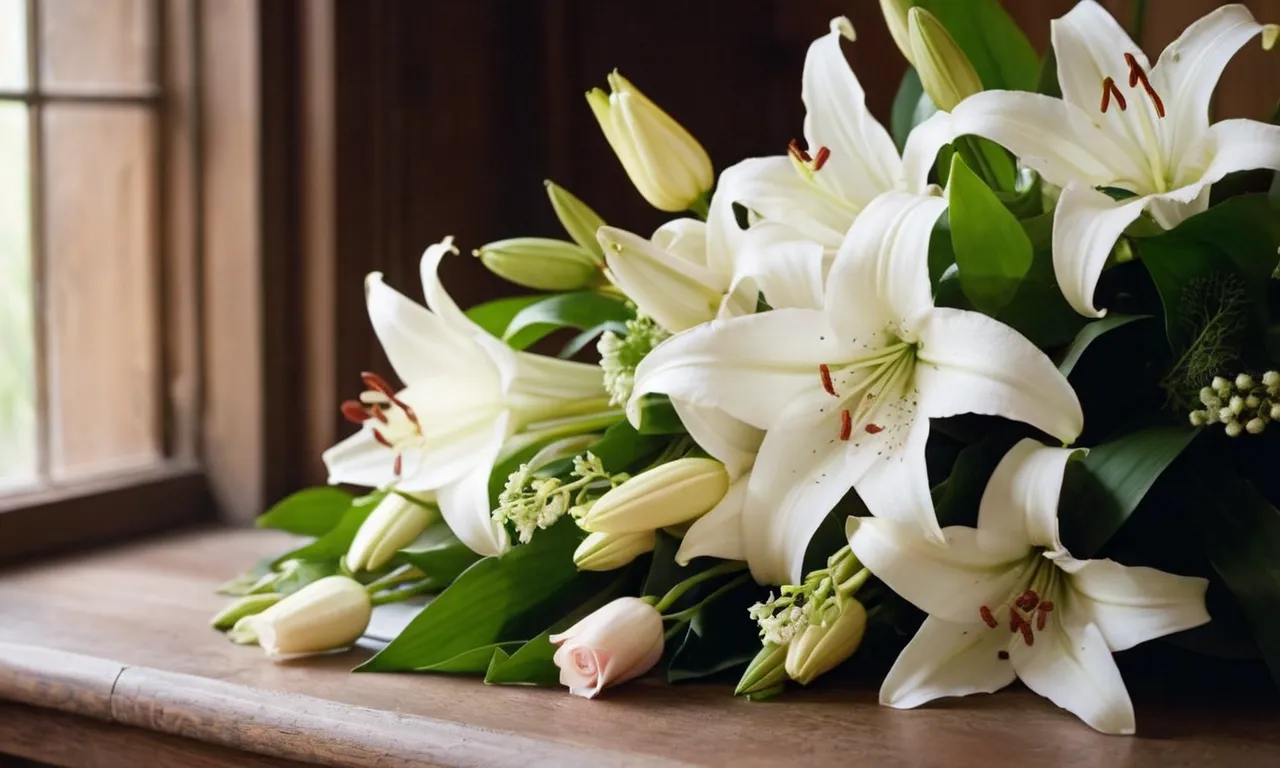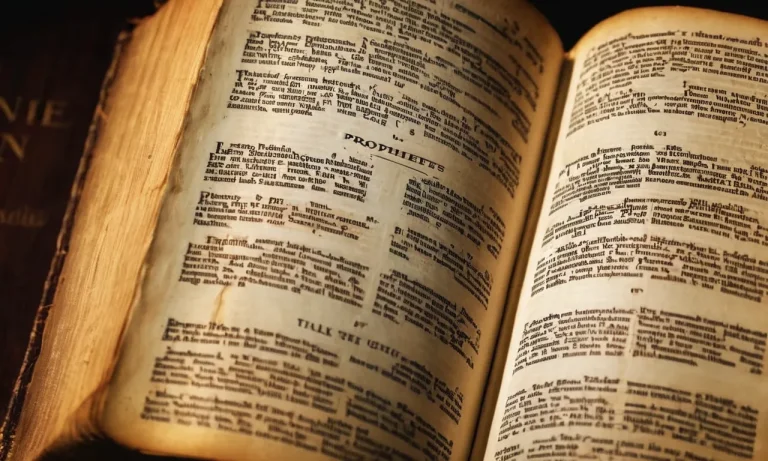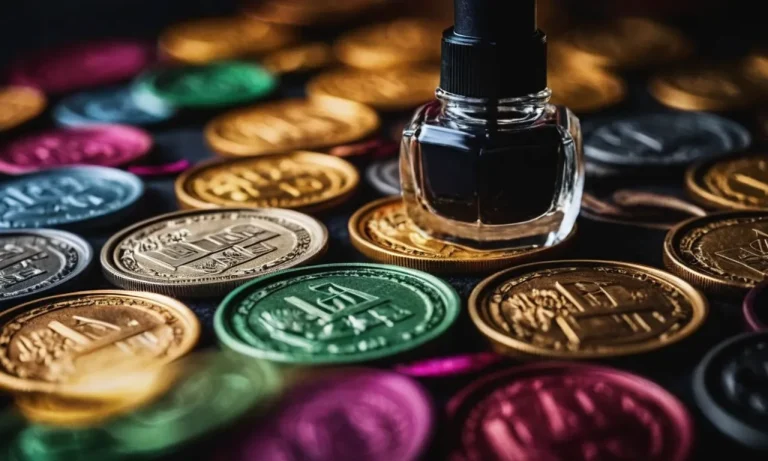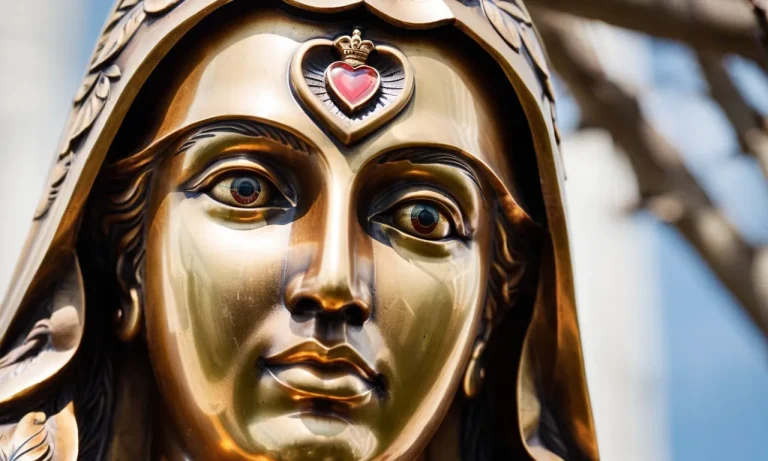Flowers Mentioned In The Bible: A Comprehensive Guide
The Bible refers to several types of flowers, both literally and symbolically. If you’re looking for a quick answer, some of the specific flowers mentioned include the lily, rose, hyssop, narcissus, saffron crocus, mandrake, and almond blossoms.
In this comprehensive guide, we will explore the different flowers referenced in the Bible, looking at the passages where they appear and analyzing the symbolism and meaning behind these floral images.
With over 25 flowering plants directly referenced, we’ll uncover what these biblical botany descriptions can teach us about ancient Israeli culture and the environment.
Prominent Flowers in the Bible
The Lily as an Image of Beauty and Solomon’s Temple Decor
The lily is mentioned frequently throughout the Bible as a symbol of beauty and purity. In the Song of Songs, the beloved’s beauty is compared to the grace of a lily (Song of Songs 2:2).
Lilies are also referenced in Jesus’ teaching about not worrying, as they neither toil nor spin but are adorned in splendor (Matthew 6:28-29).
Additionally, lilies were a key decorative element in Solomon’s temple, symbolizing glory and perfection:
“He carved all the walls of the temple all around with carved engravings of cherubim, palm trees, and open flowers, inner and outer sanctuaries.” (1 Kings 6:29)
Archaeologists have discovered many ancient images of lilies decorating ancient Jewish temples. The white lily likely represents purity and the gold lily represents glory and Solomon’s majestic temple.
Roses and Love in the Song of Solomon
In the beautiful poetry of the Song of Solomon, roses are mentioned several times as symbols of love and romance.
The beloved woman is compared to a “rose of Sharon” and “lily of the valleys” (Song of Solomon 2:1). The couples’ romance is also described:
“My beloved is mine and I am his; He feeds his flock among the lilies. Until the day breaks and the shadows flee away, turn, my beloved, and be like a gazelle or a young stag upon the mountains of Bether.” (Song of Solomon 2:16-17)
Here, the roses and lilies represent not only beauty but also the loving relationship between the couple. Roses continue to be symbols of romance and love today.
Hyssop and Ritual Purification Laws
Hyssop is an aromatic plant that was used ceremonially in ancient Israelite worship and ritual purification rites. God commanded Moses:
“Take hyssop, dip it in the blood that is in the basin, and strike the lintel and the two doorposts with the blood that is in the basin.” (Exodus 12:22)
This ritual purified the Hebrews’ homes during Passover. Hyssop was also used to sprinkle blood on those cured of skin diseases to purify them (Leviticus 14:4-7). The Gospels mention hyssop at Jesus’ crucifixion, as the soldiers gave Jesus vinegar on a sponge attached to hyssop (John 19:29).
This may symbolize Jesus’ role as the ultimate sacrifice to purify believers.
Other Notable Flowers and Plants
Saffron Crocus – Exotic Spices from Trade
The saffron crocus (Crocus sativus) was a rare and expensive spice that was imported through trade routes like the Incense Route. Saffron came all the way from the Mediterranean, Asia Minor, and Persia.
This exotic spice was referenced in the Song of Solomon as one of the exotic imported goods that the Beloved was compared to (Song of Solomon 4:14).
Saffron was prized for its distinct flavor and golden yellow color, used for seasoning foods, perfumes, and dyes.
Only the red stigmas of the crocus flower were used for saffron, and it took 75,000 flowers to produce one pound of saffron! This labor-intensive harvest process made saffron extremely valuable in biblical times.
Almond Blossoms as a Sign of Spring
The almond tree (Prunus dulcis) was native to Israel and produced early spring white or pink blossoms. In the Bible, God instructed Moses to make lamps out of almond branches to light the tabernacle (Exodus 25:33-34).
Jeremiah used the almond rod as a symbol of God’s watchfulness, as he saw the branch of an almond tree as an early sign of spring’s arrival (Jeremiah 1:11-12).
The teacher in Ecclesiastes contemplated how the almond tree blossoms and flourishes (Ecclesiastes 12:5).
The pink and white almond blossoms were a welcome sign of hope that winter was ending and spring’s renewal was near.
Mandrake Plant and Fertility
The mandrake plant (Mandragora officinarum) has a long history as a plant associated with fertility and childbearing.
This Mediterranean plant has flowers that produce forked tuberous roots that often resembled human figures.
In Genesis 30:14-16, Rachel desired the mandrakes that Reuben, the son of Leah, had found. She bargained with Leah for the mandrakes in exchange for a night with their husband Jacob.
The mandrake plant was thought to be an aphrodisiac and aid in conception.
The beloved in Song of Solomon poetically describes her lover’s appearance using romantic imagery like the “fragrance of Lebanon” and “flowering of the mandrakes” (Song of Solomon 7:13).
While not scientifically founded, the mandrake had strong connections to fertility and love in biblical symbolism.
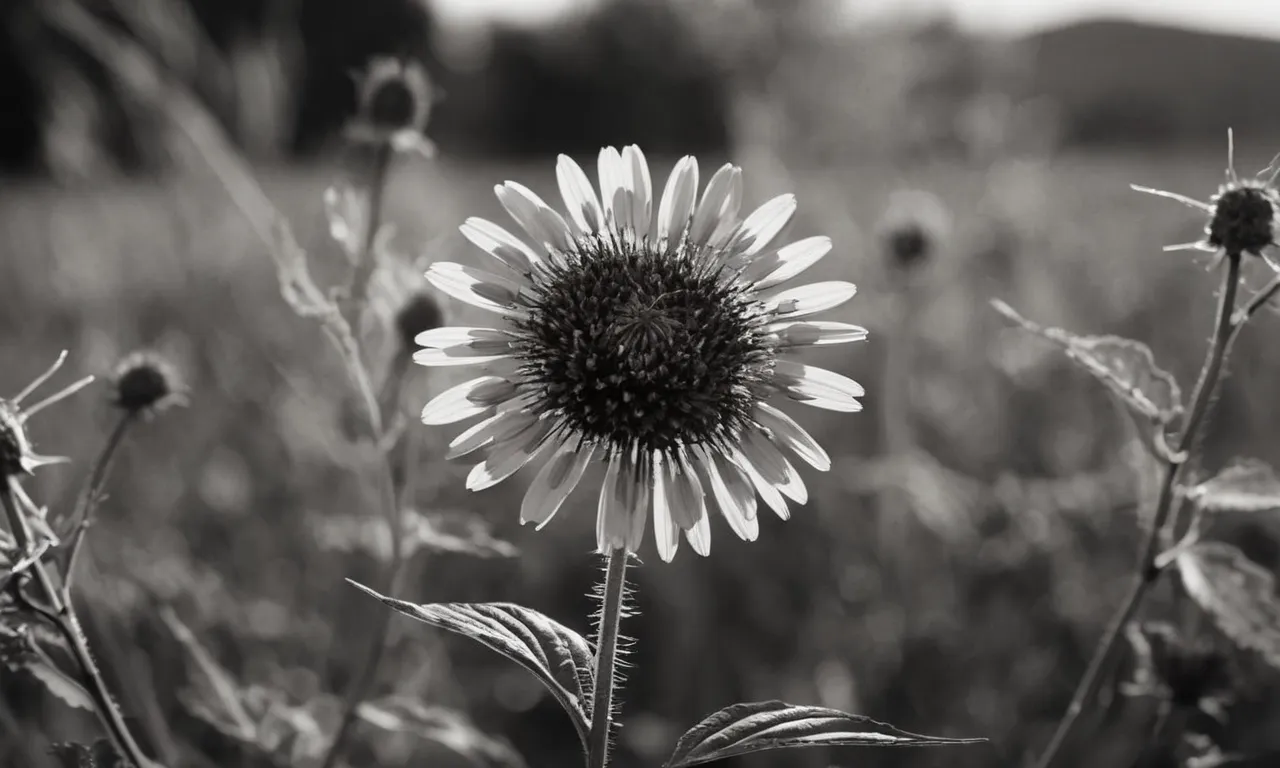
The Symbolic Meaning Behind Biblical Flowers
Flowers hold profound symbolic meaning in the Bible. Over the centuries, floral imagery has been used to convey spiritual truths about God and His relationship with humanity.
By analyzing the context surrounding flower references, we can uncover the rich biblical symbolism ascribed to botanicals.
Purity and Innocence
White flowers like lilies symbolize purity and innocence in the Bible. For example, in Song of Songs, the groom calls his bride “a lily among thorns” (Song of Songs 2:2), conveying her pure and uncorrupted beauty.
Similarly, Christ talks about how the lilies neither toil nor spin, yet are adorned in splendor as a metaphor for the innocence of faith (Luke 12:27).
Hope and Healing
The almond tree represents hope and restoration in the Bible. In Jeremiah 1:11-12, God shows Jeremiah an almond branch to symbolize His watchfulness in bringing about His promised restoration of Israel.
Likewise, the balm of Gilead (potentially the myrrh or mastic tree) is associated with healing and relief from suffering (Jeremiah 8:22).
Provision and Sustenance
The manna God provided to the Israelites in the desert is metaphorically called “bread from heaven” and “spiritual food” (Psalm 78:24, John 6:31). This provision of sustenance in a barren land illustrates God’s faithful provision.
Similarly, the olive tree supplies oil, representing the Holy Spirit and God’s anointing (Zechariah 4:2-6).
Beauty and Celebration
Flowers are incorporated into several holy days and celebrations in the Bible. For example, the Feast of Tabernacles involved waving palm, myrtle, and willow branches to commemorate the Exodus from Egypt (Leviticus 23:40).
And floral crowns were worn at weddings and festivals as symbols of beauty, joy, and honor (Song of Songs 3:11, Isaiah 28:1).
The Brevity of Life
Finally, flowers can symbolize the fleeting nature of life. As Isaiah 40:6-8 poetically states, “All people are like grass, and all their faithfulness is like the flowers of the field.
The grass withers and the flowers fall.” Like wildflowers that bloom and perish in a matter of days, our lives are brief and beautiful.
This symbolism reminds us of the vanity of flesh and turns us to trust in things eternal.
By thoughtfully reflecting on the context surrounding floral imagery in scripture, we gain insight into core biblical themes like purity, sustenance, celebration and brevity of life. Next time you come across a flower reference in the Bible, pause to consider what deeper symbolic meaning might lie behind its literary use.
What the Flowers Tell Us About Ancient Israel
The flowers mentioned in the Bible provide intriguing glimpses into the botany and agriculture of ancient Israel. Though brief, these biblical references allow us to envision the landscapes that existed thousands of years ago.
Climate and Growing Conditions
The moderate climate and fertile soils of ancient Israel enabled a diverse floral environment to thrive. Over 3,000 plant species have been documented in the region, ranging from hardy mountain plants to lush Mediterranean species.
Several biblical passages describe ancient Israel as “a land flowing with milk and honey” (Exodus 3:8), conjuring images of lush meadows filled with wildflowers and honeybee hives.
Though likely figurative, these descriptions suggest the land’s agricultural bounty supported vibrant plant life.
Cultivated Flowers and Plants
In addition to wildflowers like anemones, tulips, and iris that blanketed the hillsides each spring, many domesticated flower and plant varieties were also grown.
The people of ancient Israel cultivated flowers like saffron crocus to extract dyes and perfumes.
Herb and spice plants like myrrh, frankincense, cinnamon, and aloes were also prized for their aromatic resins, essential oils, and medicinal qualities.
Orchards filled with almond, pomegranate, olive, fig, and date palms also dotted the landscapes, providing both sustenance and aesthetic beauty.
Flowers and Biblical Symbolism
Flowers often carried symbolic meaning in the Bible. Lilies signified purity and righteousness, while thorns and thistles represented sin and death.
The brevity and beauty of wildflowers served as metaphors for the transience of life. As Isaiah 40:6-8 (ESV) states: “All flesh is like grass and all its glory like the flower of grass. The grass withers, and the flower falls.”
These symbolic floral motifs illustrate how intrinsically flowers were linked to the culture and spirituality of ancient Biblical peoples.
Conclusion
The diverse flowers mentioned in the Bible provide insights into the agriculture, romance, trade relationships, and symbolism important to ancient Israeli culture.
While some are specifically named, like lilies, roses, and almonds, even more act as poetic images that reinforce key messages or prophecies within Scripture.
Beyond the intrinsic beauty of flowers, these Bible passages use the splendor of the natural world to teach deeper spiritual truths. The brevity and glory of flowering plans ultimately direct us to consider our own mortality and relationship with the Divine.

